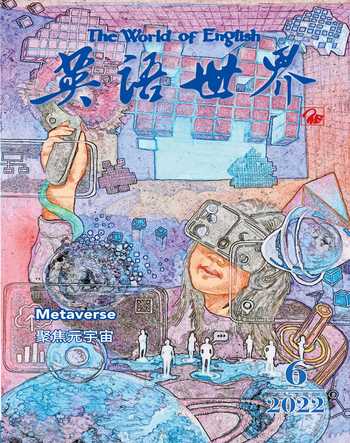The Bataan Death March巴丹死亡行軍
珍妮弗·羅森堡 聶雅真 周知非
Prelude
The Bataan Death March was Japan’s brutal forced march of American and Filipino prisoners of war during World War II. The 63-mile march began on April 9, 1942, with at least 72,000 POWs from the southern end of the Bataan Peninsula in the Philippines. Some sources say 75,000 soldiers were taken prisoner after the surrender at Bataan, which broke down to 12,000 Americans and 63,000 Filipinos. The horrible conditions and harsh treatment of the prisoners during the Bataan Death March resulted in an estimated 7,000 to 10,000 deaths.
Surrender in Bataan
Only hours after the Japanese attack on Pearl Harbor on December 7, 1941, the Japanese struck airbases in the American-held Philippines. In a surprise air attack around noon on December 8, most of the military aircraft on the archipelago were destroyed.
Unlike in Hawaii, the Japanese followed their airstrike in the Philippines with a ground invasion. As Japanese ground troops headed toward the cap-ital of Manila, U.S. and Filipino troops retreated on December 22 to the Bataan Peninsula on the western side of the large Philippine island of Luzon.
Cut off from food and other supplies by a Japanese blockade, the U.S. and Filipino soldiers slowly used up their supplies, going from half rations to third rations and then quarter rations. By April, they had been holding out in the Bataan jungles for three months. They were starving and suffering from diseases.
There was no option other than to surrender. On April 9, 1942, U.S. Gen. Edward P. King signed the surrender document, ending the Battle of Bataan. The remaining American and Filipino soldiers were taken by the Japanese as POWs. Almost immediately, the Bataan Death March began.
March Begins
The purpose of the march was to get 72,000 POWs from Mariveles in the southern end of the Bataan Peninsula to Camp O’Donnell in the north. The prisoners were to march 55 miles to San Fernando, then travel by train to Capas before marching the last eight miles to Camp O’Donnell.
The prisoners were separated into groups of approximately 100, assigned Japanese guards, and sent marching. It would take each group about five days to make the journey. The march would have been arduous for anyone, but the starving prisoners endured cruel treatment throughout their long journey, making the march deadly.
Japanese Sense of Bushido
Japanese soldiers believed strongly in bushido, a code or set of moral principles established by the samurai. According to the code, honor is brought to a person who fights to the death; anyone who surrenders is considered contemptible. To Japanese soldiers, the captured American and Filipino POWs were unworthy of respect. To show their disgust, the Japanese guards tortured their prisoners throughout the march.
The captured soldiers were given no water and little food. Although artesian wells with clean water were scattered along the way, Japanese guards shot prisoners who broke rank and tried to drink from them. A few prisoners scooped up stagnant water as they walked, which made many sick.
The prisoners were given a couple of rice balls during their long march. Filipino civilians tried to throw food to the marching prisoners, but Japanese soldiers killed those who tried to help.
Heat and Random Brutality
The intense heat during the march was miserable. The Japanese exacerbated the pain by making prisoners sit in the sun for several hours without shade, a form of torture called “the sun treatment.”
Without food and water, the prisoners were extremely weak as they marched in the hot sun. Many were seriously ill from malnutrition; others had been wounded or were suffering from diseases they had picked up in the jungle. The Japanese didn’t care: If anyone slowed or fell behind during the march, they were shot or bayoneted. A Japanese “buzzard squad” followed each group of marching prisoners to kill those who couldn’t keep up.
Random brutality was common. Japanese soldiers frequently hit prisoners with the butt of their rifles. Bayoneting was common. Beheadings were prevalent.
Simple dignities also were denied the prisoners. The Japanese offered neither latrines nor bathroom breaks along the long march. Prisoners who had to defecate did so while walking.
Camp O’Donnell
When the prisoners reached San Fernando, they were herded into boxcars. The Japanese forced so many prisoners into each boxcar that there was standing room only. Heat and other conditions inside caused more deaths.
Upon arrival in Capas, the remaining prisoners marched another eight miles. When they reached Camp O’Donnell, it was discovered that only 54,000 prisoners made it there. An estimated 7,000 to 10,000 had died, while other missing soldiers presumably escaped into the jungle and joined guerrilla groups.
Conditions at Camp O’Donnell also were brutal, leading to thousands more POW deaths in the first few weeks there.
The Man Responsible
After the war, a U.S. military tribunal charged Lt. Gen. Homma Masaharu for the atrocities during the Bataan Death March. Homma was in charge of the Philippines invasion and ordered the evacuation of the POWs from Bataan.
Homma accepted responsibility for his troops’ actions but claimed he never ordered such cruelty. The tribunal found him guilty. On April 3, 1946, Homma was executed by firing squad in the town of Los Banos in the Philippines.
前言
巴丹死亡行軍是二戰中日本強迫美國和菲律賓戰俘進行的一次殘忍行軍。 這次63英里的行軍開始于1942年4月9日,至少7.2萬名來自菲律賓巴丹半島南端的戰俘被迫參加。也有消息說,在巴丹投降被俘的有7.5萬人,其中美軍1.2萬人、菲軍隊6.3萬人。行軍條件惡劣,戰俘受盡折磨,估計導致7000至1萬人死亡。
巴丹投降
1941年12月7日,日本偷襲了珍珠港;僅幾個小時后,又襲擊了美控菲律賓的空軍基地。12月8日中午前后,日本出其不意發動空襲,菲律賓的美軍機大多被毀。
和在夏威夷不同,日本在對菲律賓空襲后立即發動了地面進攻。日本陸軍進軍首都馬尼拉時,美軍和菲軍于12月22日撤退到菲律賓大島呂宋島西側的巴丹半島。
由于日軍實施封鎖,切斷了食物等物資的供應,美國和菲律賓部隊的儲備逐漸耗盡,口糧配給從一半減少到三分之一再到四分之一。到4月,他們已在巴丹叢林中堅持了3個月。他們忍饑挨餓,又遭疾病折磨。
除了投降,無路可走。1942年4月9日,美國愛德華·P.金將軍簽署了投降書,結束了巴丹半島之戰。剩下的美國和菲律賓士兵成了日軍戰俘。巴丹死亡行軍幾乎立即就開始了。
行軍開始
這一行軍是為了把7.2萬名戰俘從巴丹半島南端的馬里韋萊斯押送到北部的奧唐奈戰俘營。戰俘們要行軍55英里至圣費爾南多,然后乘火車到卡帕斯,再從卡帕斯行軍最后8英里至奧唐奈戰俘營。
戰俘們被分成若干隊,每隊約100人,指派日軍衛兵監管,之后便出發了。每隊都需要約5天完成行軍。行軍對任何人來說都是艱苦的,但忍饑挨餓的戰俘在漫長的行程中還要遭受殘酷折磨,這次行軍對他們來說就是一次死亡之旅。
日本武士道
日軍士兵極其崇尚武士道精神,武士道是日本武士階層確立的一套道德準則。根據武士道,死戰者光榮,投降者皆可恥。對日軍衛兵來說,被俘的美菲戰俘都不值得尊重。為表鄙視,日軍在整個行軍途中對戰俘百般折磨。
他們不給戰俘喝水,也不給什么吃的。雖然沿途有自流井可以喝到清水,但離隊去井邊喝水的戰俘全被日軍槍殺了。有些戰俘沿途舀污水喝,許多人因此病倒了。
長途行軍中,戰俘分到了幾個飯團。菲律賓的老百姓試圖給行軍中的戰俘扔點兒食物,但日本兵把那些想施以援手的人都殺了。
炎熱和暴行肆虐
行軍途中的酷熱令戰俘們苦不堪言。日本人強迫戰俘在沒有遮陰的大太陽地坐幾個小時,用這種所謂“陽光治療”的折磨加劇戰俘的痛苦。
戰俘們走在烈日下,沒吃沒喝,羸弱至極。許多人由于營養不良而病入膏肓;其他人受了傷,或在叢林中染了病。日本人根本不在意:行軍途中如果有人走得慢或掉了隊,就會被槍斃或刺死。日軍的“禿鷹隊”跟在每隊戰俘后面,負責殺死掉隊的人。
想著法子折磨人屢見不鮮。日本兵常常用他們步槍的槍托毆打戰俘。刺刀殺人如家常便飯。砍頭更是普遍現象。
戰俘們最起碼的尊嚴也完全被剝奪。日本人在行軍途中根本不提供上廁所和洗澡時間。戰俘們大小便時只能邊走邊排。
奧唐奈戰俘營
戰俘們到達圣費爾南多后就被趕上了貨車車廂。日本人在每節車廂里都塞了過多戰俘, 以致所有人都只能站著。車廂內很悶熱,加上其他情況,導致更多人死亡。
抵達卡帕斯后,幸存的戰俘又徒步8英里。最終抵達奧唐奈戰俘營的戰俘只剩下了5.4萬名。根據統計,有7000至1萬名戰俘死亡,其他失蹤了的戰俘估計逃入叢林參加了菲律賓游擊隊。
奧唐奈戰俘營的情況同樣殘酷,導致抵達這里的最初幾周就有數千名戰俘死亡。
罪魁禍首
戰后,美國軍事法庭因日本在巴丹死亡行軍中犯下的罪行指控本間雅晴中將。本間指揮入侵菲律賓,并下令戰俘從巴丹半島撤離。
本間承認對部下的行為負有責任,但辯稱他從未下令殘殺戰俘。軍事法庭判他罪名成立。1946年4月3日,行刑隊在菲律賓洛斯巴諾斯鎮對本間執行了死刑。

